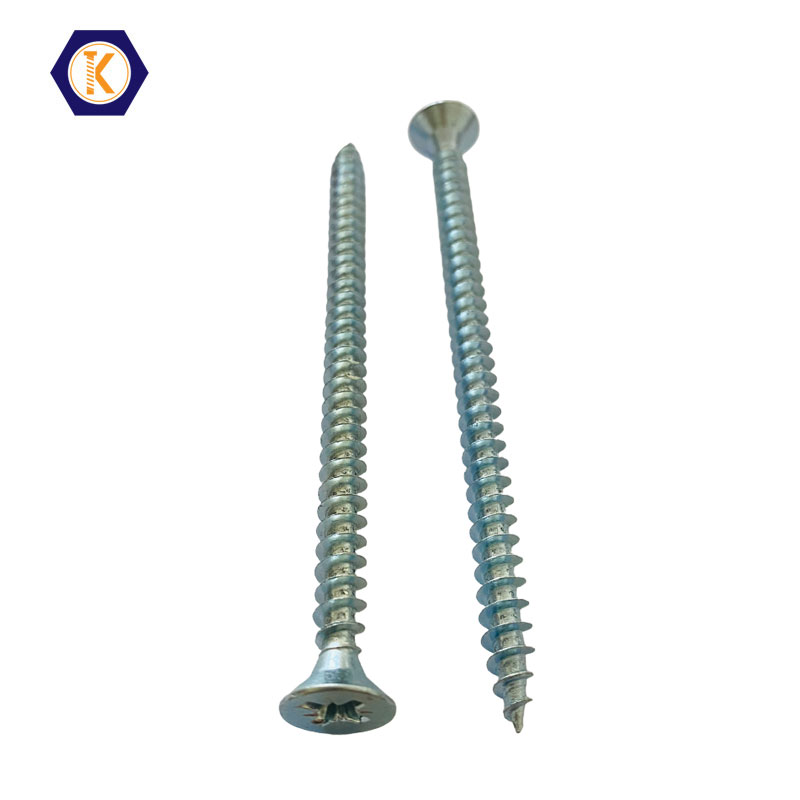Exploring Pre-Drilling Requirements for Chipboard Screws with Torx Flat Heads and Zinc Plating
2024-03-11
Chipboard screws with Torx flat heads and zinc plating are renowned for their versatility, reliability, and ease of use in woodworking, construction, and DIY projects. One common question that arises when using these screws is whether pre-drilling is necessary before driving them into the material. Let's delve into the topic of pre-drilling requirements for chipboard screws and explore when it may be advisable to pre-drill and when it may not be necessary.
1. Understanding Pre-Drilling: Pre-drilling involves creating pilot holes in the material before driving the screws to facilitate easier insertion and prevent splitting or damage to the material. Whether pre-drilling is necessary depends on various factors, including the type of material, the thickness of the material, and the size of the screws.
2. Material Considerations: Chipboard screws are commonly used in a variety of materials, including chipboard, plywood, MDF (medium-density fiberboard), and softwoods like pine or cedar. While some materials, such as softwoods, may not require pre-drilling due to their relatively low density and ease of penetration, harder materials like hardwoods or laminates may benefit from pre-drilling to prevent splitting or cracking.
3. Thickness of the Material: The thickness of the material being fastened also influences the need for pre-drilling. Thicker materials generally require larger and longer screws, which may exert greater force during insertion. Pre-drilling pilot holes can help alleviate this pressure and prevent the material from splitting or fracturing under the stress of driving the screws.
4. Screw Size and Length: The size and length of the chipboard screws play a crucial role in determining whether pre-drilling is necessary. Larger screws with thicker shafts or longer lengths may require pre-drilling to ensure proper insertion and prevent binding or resistance. Smaller screws, on the other hand, may be able to penetrate the material without pre-drilling, especially in softer or thinner materials.
5. Benefits of Pre-Drilling: Pre-drilling offers several benefits, including reduced risk of splitting or cracking the material, smoother insertion of the screws, and enhanced control over the depth and angle of insertion. Pre-drilling also helps ensure that the screws align correctly and seat flush with the surface, resulting in a neater and more professional finish.
6. Exceptions to Pre-Drilling: In some cases, pre-drilling may not be necessary, particularly when using self-tapping chipboard screws with sharp, spaced threads designed to create their own mating threads as they are driven into the material. Additionally, pre-drilling may be unnecessary when working with softer materials or when using smaller screws with lower insertion torque.
7. Best Practices: While pre-drilling requirements may vary depending on the specific application and material, it's always advisable to err on the side of caution and conduct a test fit before driving the screws. This allows you to assess the material's response to the screws and determine whether pre-drilling is necessary to achieve optimal results.
In conclusion, pre-drilling requirements for chipboard screws with Torx flat heads and zinc plating depend on factors such as the type of material, thickness of the material, screw size, and length. While pre-drilling may be advisable in certain situations to prevent splitting or damage to the material, it may not always be necessary, especially when using self-tapping screws or working with softer materials. By understanding the factors that influence pre-drilling requirements and exercising caution when driving screws into the material, you can ensure smooth and successful installation while preserving the integrity of the workpiece.



